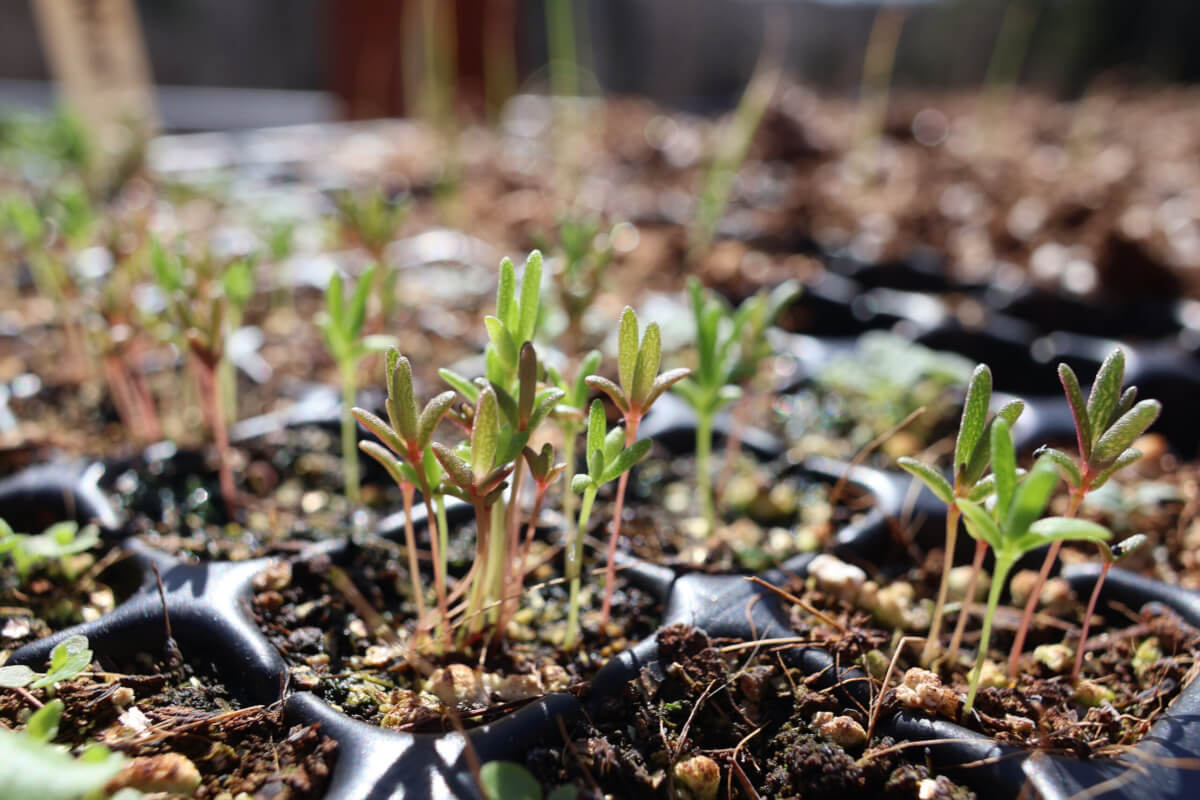Here’s a tip for those that are growing “seed mixes” with several different types or varieties of a particular plant. This one might not be super intuitive as it can counter more traditional wisdom sometimes!
When you’re transplanting up, or choosing which plants to bring forward, it’s really important that you select different looking seedlings. Not just things like color, but also seedling size!
Traditional wisdom has you selecting the “strongest” genetics, or usually the largest seedlings, to bring forward into your garden. With those variety mixes, sometimes the smaller seedlings are a different variety or type that are important not to “weed out” if you want that full mix!
We’ve had a checkered past with seed mixes. For a long time, we were “purists” and really wanted to know exactly what varieties we were growing. In more recent years, though, we’ve really enjoyed the diversity we can get from those seedling mixes. Especially when it comes to things like leaf lettuce and flower colors.
It’s perfectly OK to shift between being the “purist” and “whatever” stance when it comes to genetics. Sometimes we find that certain things lend themselves well to being a mix. Other times, we’re definitely going to take a more strict stance and insist on specific genetics. Some of the reasons we might choose to be more strict is when we observe early, undesirable flowering in certain varieties or if certain things just don’t perform particularly well in those mixes.
We’ve even had plants that we found in mixes that ended up making it into our more permanent seed rotation. It can sometimes be difficult to positively identify those genetics, especially if the seed manufacturer doesn’t specify them. But, when you can positively ID those interesting, successful plants, they can really add a little “somethin'” to your bag of tricks.
One seed mix we always stay away from are those that contain a bunch of entirely different kinds of plants. We’ve seen things like random herb mixes, “butterfly garden” mixes and things like that. These can be tough due to our short season where we often can’t direct sow a lot of plant varieties and get them to mature in the few months we have. We have done some more heavily curated mixes where the selection is based around sowing time and the plants are generally compatible with each other. An example of these are “cut flower mixes” where every seed is sown about 5-6 weeks to last frost.
We totally get why gardening is a tough skill to learn! For every so-called “rule” you’ll learn, you’ll find a situation where that rule needs to be broken. It do be like that, unfortunately. If it were easy, everyone would be doing it!


